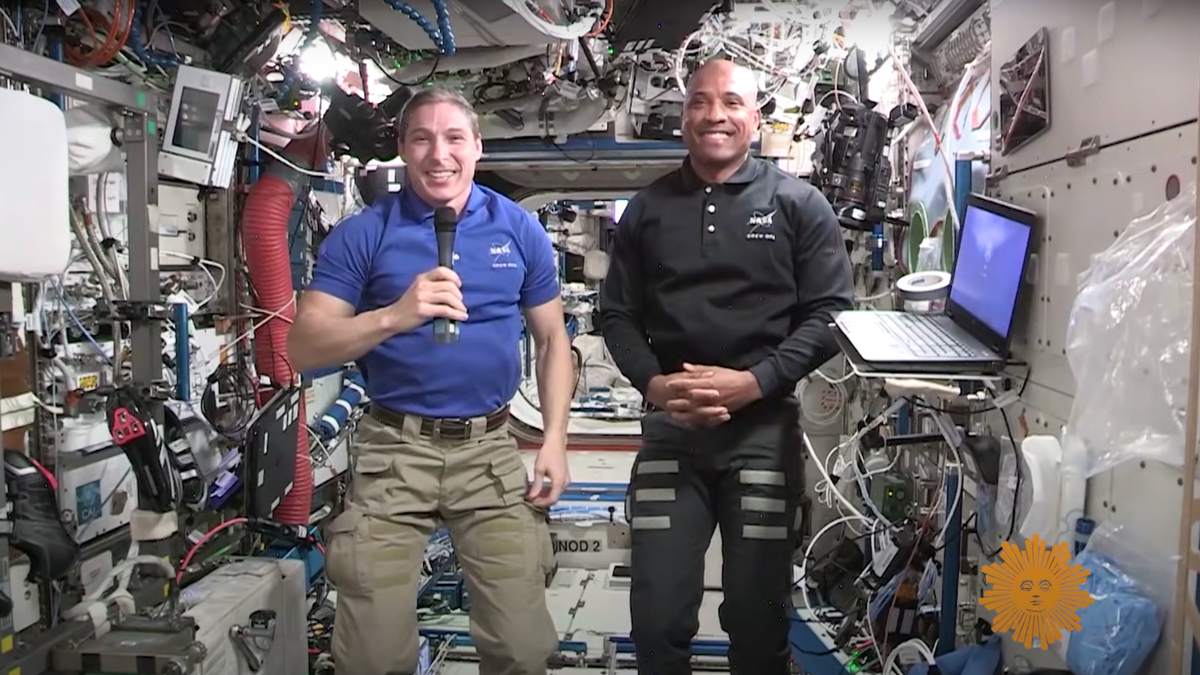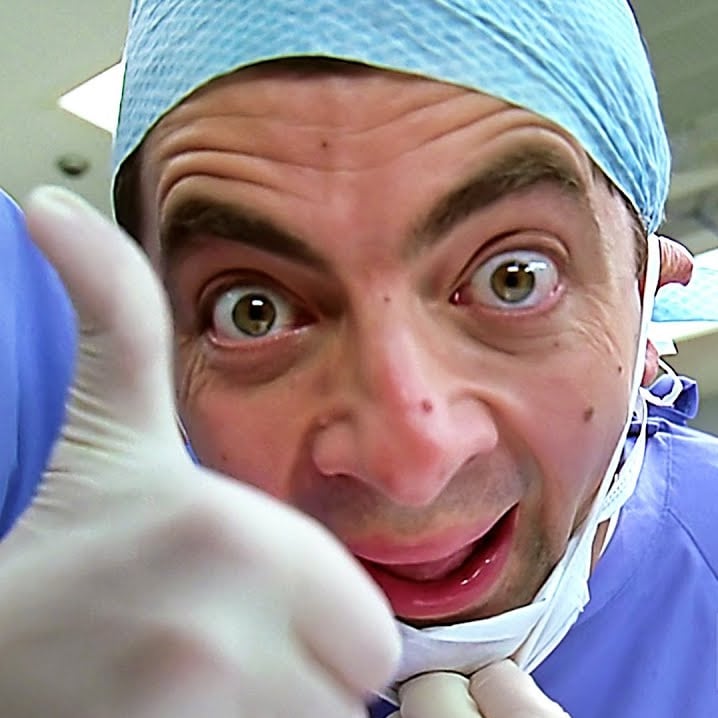Becoming an astronaut is a fairly romanticized career path, but there are a lot of less-than-romantic aspects to working 50 miles or more above the Earth’s surface. Case in point: just being in zero G makes the human body do all sorts of embarrassing things.
A new story from the New York Times exhaustively points out that living in space comes with all sorts of “bodily indignities” which should give even the most eager potential space explorer pause. It turns out, it’s not just deadly radiation or muscle loss due to weightlessness astronauts traveling to spots in our own solar system will have to put with:
In microgravity, however, the blood volume above your neck will most likely still be too high, at least for a while. This can affect the eyes and optic nerves, sometimes causing permanent vision problems for astronauts who stay in space for months, a condition called spaceflight-associated neuro-ocular syndrome. It also causes fluid to accumulate in nearby tissues, giving you a puffy face and congested sinuses. As with a bad cold, the process inhibits nerve endings in the nasal passages, meaning you can’t smell or taste very well. (The nose plays an important role in taste.) The I.S.S. galley is often stocked with wasabi and hot sauce.
These sensory deficits can be helpful in some respects, though, because the I.S.S. tends to smell like body odor or farts. You can’t shower, and microgravity prevents digestive gases from rising out of the stew of other juices in your stomach and intestines, making it hard to belch without barfing. Because the gas must exit somehow, the frequency and volume (metric and decibel) of flatulence increases.
Other metabolic processes are similarly disturbed. Urine adheres to the bladder wall rather than collecting at the base, where the growing pressure of liquid above the urethra usually alerts us when the organ is two-thirds full. “Thus, the bladder may reach maximum capacity before an urge is felt, at which point urination may happen suddenly and spontaneously,” according to “A Review of Challenges & Opportunities: Variable and Partial Gravity for Human Habitats in L.E.O.,” or low Earth orbit. This is a report that came out last year from the authors Ronke Olabisi, an associate professor of biomedical engineering at the University of California, Irvine, and Mae Jemison, a retired NASA astronaut. Sometimes the bladder fills but doesn’t empty, and astronauts need to catheterize themselves.
New York Times article (paywalled)
e: spelling
That is some interesting biology that SciFi tends to gloss over when dealing with microgravity
Oh, speaking of scifi, I read another article (which I cant find now, unfortunately) about space walks: astronauts can’t just climb into a space suit and exit the space station, because that would cause decompression sickness. They have to undergo about 24 hours of preparation, then spend time in a decompression chamber once they re-enter the station. I can’t find the article I read atm, but here’s one from space.com that talks about it:
About 24 hours before the spacewalk, astronauts undergo decompression, the same procedure divers follow when returning from the depths of the ocean to the surface of the water. Inside the space station, air is pressurized to the same degree as it is on Earth at sea level: 14.7 pounds per square inch, or 1 atmosphere.
But inside a spacesuit it’s 4.3 psi, according to NASA, which is about the same pressure experienced at 30,000 feet (9,000 meters) above Earth. Experiencing a rapid drop in pressure from 14.7 to 4.3 psi causes nitrogen bubbles to form in the bloodstream and get stuck, blocking blood flow — a condition known as “the bends” or decompression sickness. To avoid the condition, astronauts camp out the night before in a closet-sized airlock while wearing their space suit so their bodies have time to adjust to the change in pressure.
Source: Spacewalks: How they work and major milestones
e: Sandra Bullock would have died of nitrogen narcosis pretty quick.
Sci-fi spacesuits could be more advanced and maintain a higher internal pressure. The ones happening in the future at least.
Hopefully some day we get mechanical counterpressure suits.
Haven’t we built some working prototypes already, but they’re just a hassle to put on and take off?
Yup, and they have to be specifically tailored, and, even then, keeping them tight-fitting at joints is a challenge. There are some concepts with pressurized traditional gloves to work around some of that.
Currently, higher pressure comes at the cost of reduced mobility. You’re essentially fighting the suit whenever you close your fist or bend your knees.
Which could be fixed in the future.
Stackexchange had a similar answer recently; there are some related links too.
then spend time in a decompression chamber once they re-enter the station
Really? I thought going from low pressure to high pressure wasn’t a big deal. Also, wouldn’t that be recompression, rather than decompression?
The bends doesn’t necessarily kill you. It definitely can if the decompression is fast enough with a large pressure differential, but it can also cause pain or dizziness without death.
Artificial gravity bypasses these problems and is also cheaper to film. Win-win!
If a solar sail can work, why not fart propulsion?
Urinary retention could totally give you a nasty UTI in long term microgravity, so the need to self cath might be larger than you think for something like a Mars journey. Get me that bladder scanner @Sterile_Technique@lemmy.world.
Yeah I guess zero-g really fucks with the urinary system. Kidney stones are a big issue too. IIRC even after returning to earth, astronauts have a much higher incidence of stones for the rest of their life.
Idk if catheters would be a good option, since those increase the chance of a UTI - ideally things only ever move one direction through the urethra, since probing shit into gives pathogens an express trip to the bladder. My best guess is a strict diet and drink regiment made specifically to rule out kidney stones, and scheduled/frequent urinating so bacteria don’t have a chance to propagate.
Mirror for NYTimes article: https://archive.ph/C7Z6g
If astronauts aren’t having fart-powered races across the ISS, what are they even doing with their lives?
It turns out the human anus is a terrible rocket nozzle
What about our monthly friend, the period? For my wife.
Easy, NASA sends you up with one hundred tampons
Everyone pokes fun at that number, but it was about planning for every possible scenario, including getting trapped in orbit for much longer than planned. Think about the astronauts stranded by Boeing right now. Should’ve been 1 week, and now it’s looking like 8 months.
That is an absolutely insane situation in my opinion. I don’t see how I wouldn’t go crazy being trapped up there. But I suppose they’re more likely to be okay with it if they’re astronauts. Though I doubt it.
Why doubt? That’s outstanding! As an astronaut, they want to be in space and have been trained for space. If I were an astronaut I’d be frustrated at piddly one week trips and want to be up there with the big boys taking a full shift off planet (not that I have any idea)
I do agree to a point. I’d probably want more than one week. Just not quite 32 weeks.
Oh, there is so much more to the friend than having enough (made by the lowest bidder?) government-issued tampons. There’s the digestive upset, the cramps, the inevitable leaks and the murderous rage when every pair of underwear you have is ruined. At least on Earth, I can do laundry.
There’s even a song 😆
But yeah also see Odo’s comment about missions not always ending when expected.
Gooood question! Do the women astronauts have an option to use napkins/pads? I can’t imagine that would work on space. Not all women can use tampons or find them comfortable, it’s something that takes…acclimatization, let us say.
Yeah, I wonder about that too. I’m afraid the answer is going to be that the hygiene options on ISS are rather limited, as was the point of the original post.
Big spinning wheel would provide a semblance of gravity.
I always wondered why this isn’t a thing.
Because it’s big. And it spins.
Seriously, it would have to be bigger than any space structure yet launched, it introduces extra stresses and failure points, and most importantly would make it difficult to dock or space walk. Every incoming ship would need to match the spin rate. Every space walk would tend to fling off the astronaut if something goes wrong.
Also, it may need to be bigger than you expect. There’s info somewhere on the internet estimating how big so the rotation doesn’t affect balance or cause nausea
I’d point to earth’s gravity well as the main problem, which could be tackled if asteroid mining and processing was a thing.
The rest is engineering. Challenging for sure, but not impossible.
it would need to be enormous.









